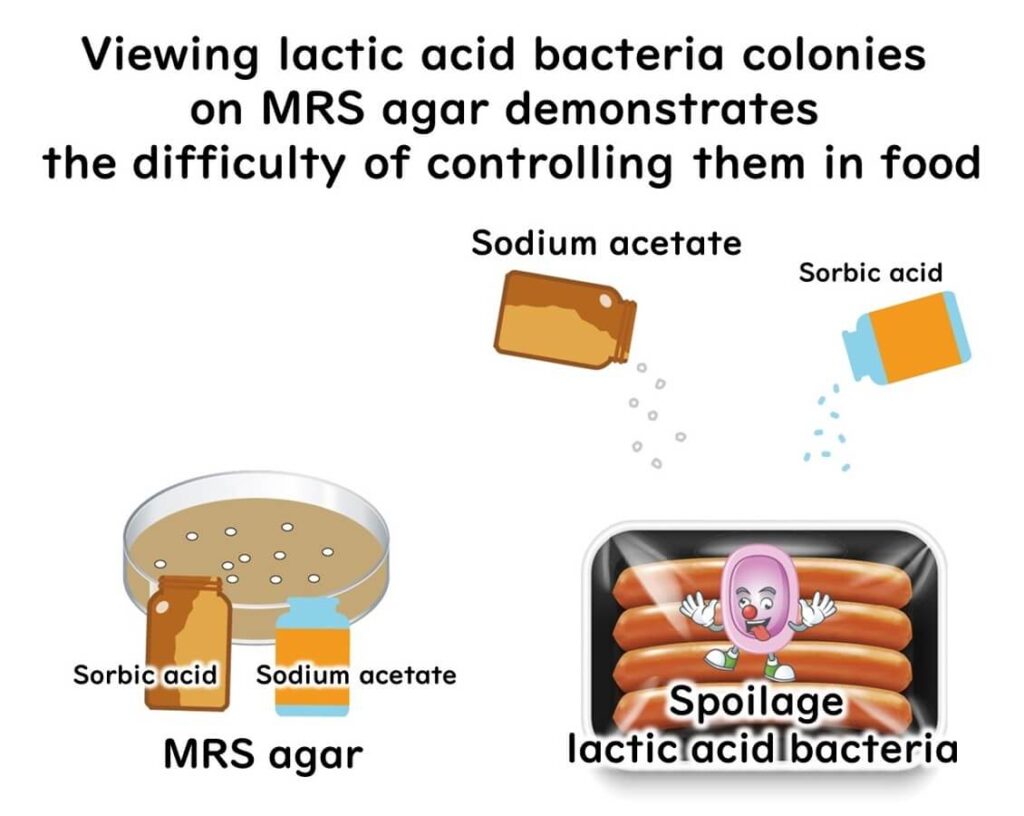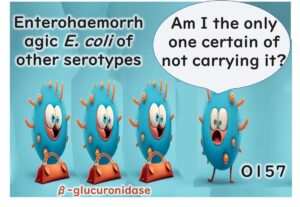Explore the intricate relationship between the unique nutritional requirements of lactic acid bacteria (LAB) and their ideal growth environment provided by MRS (de Man, Rogosa, Sharpe) media. This article highlights how MRS media, formulated with rich sources of animal proteins, vitamins, and selective growth inhibitors, caters specifically to the demanding dietary needs of LAB. By offering insights into the selective properties and nutrient composition of MRS media, we reveal its critical role in fostering the proliferation of LAB, even in the challenging conditions of laboratory research and food safety testing. In this article, let’s get to grips with just how selective media like MRS agar really are for culturing lactic acid bacteria. We'll dive into the components that make up these media.
Lactic Acid Bacteria: The Pickiest of Eaters
Lactic acid bacteria (LAB) reside in environments typically rich in sugars and proteins, and often, fats and vitamins too. As a result, these bacteria have evolved metabolisms that are not capable of synthesizing many amino acids and vitamins on their own.

This aspect is somewhat reminiscent of human metabolism. Humans stand atop the food chain and cannot synthesize 9 of the 20 standard amino acids (isoleucine, leucine, lysine, methionine, phenylalanine, threonine, tryptophan, valine, and histidine). Similarly, most strains of lactic acid bacteria lack the ability to synthesize certain amino acids such as methionine, cysteine, and histidine.
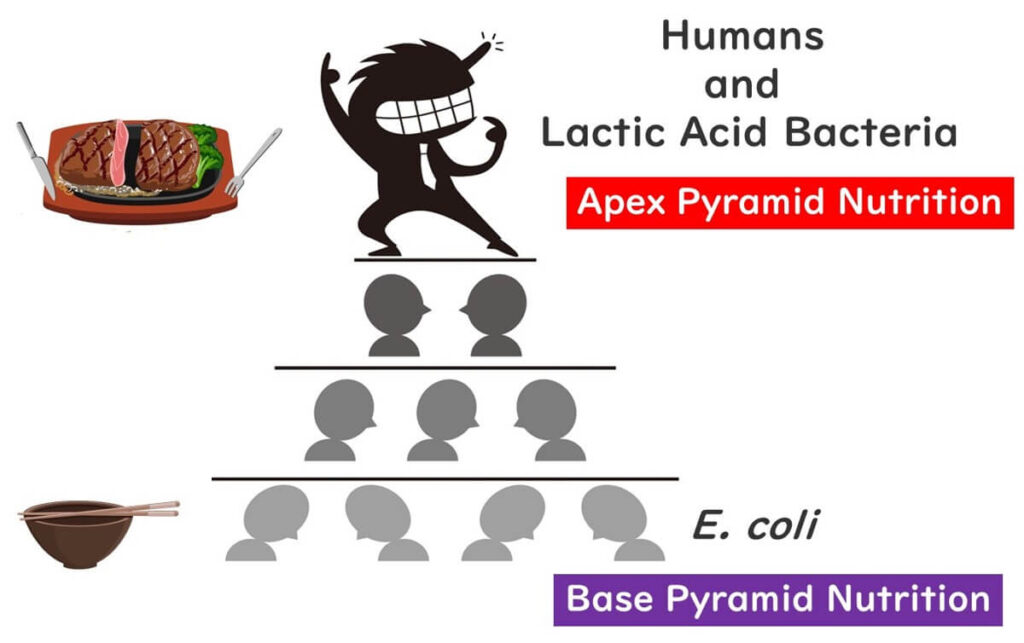
This inability to synthesize essential nutrients themselves contrasts sharply with bacteria like E. coli, which can synthesize all the amino acids it needs provided it has the necessary minerals and glucose.
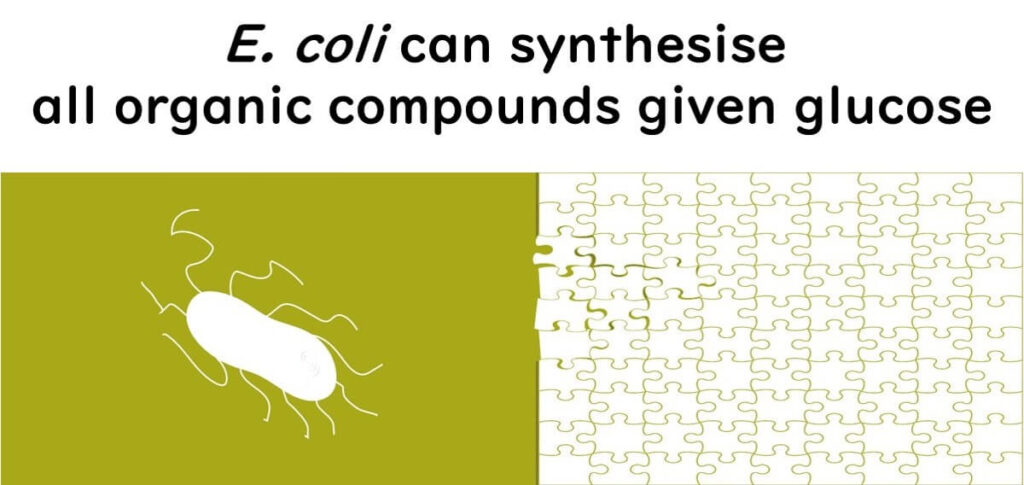
Therefore, one could say that lactic acid bacteria are quite the "divas" of the bacterial world, similar to humans in their nutritional demands.
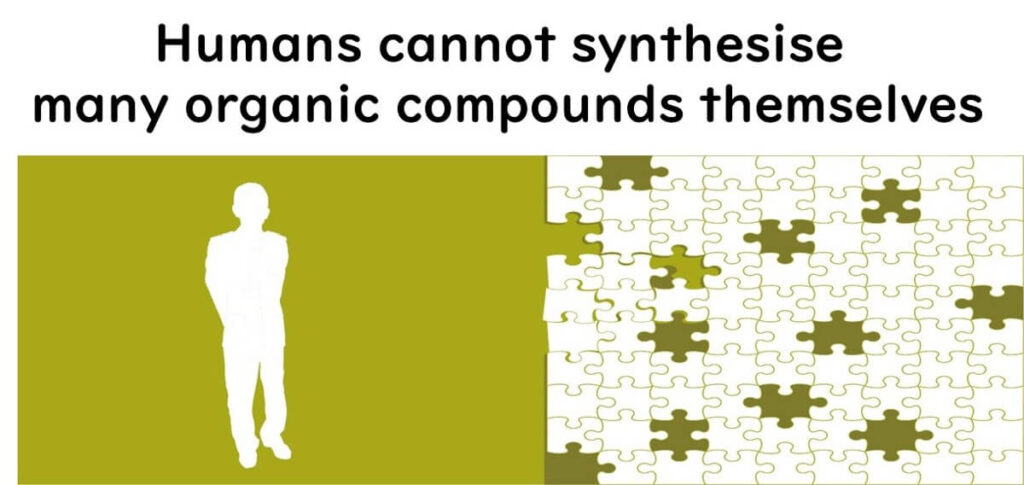
The fact that LAB cannot synthesize their own amino acids is matched by their ability to secrete proteases. These enzymes break down proteins into amino acids, which the bacteria then efficiently absorb. This capability highlights their specialized adaptation to extract and utilize nutrients from their environment.
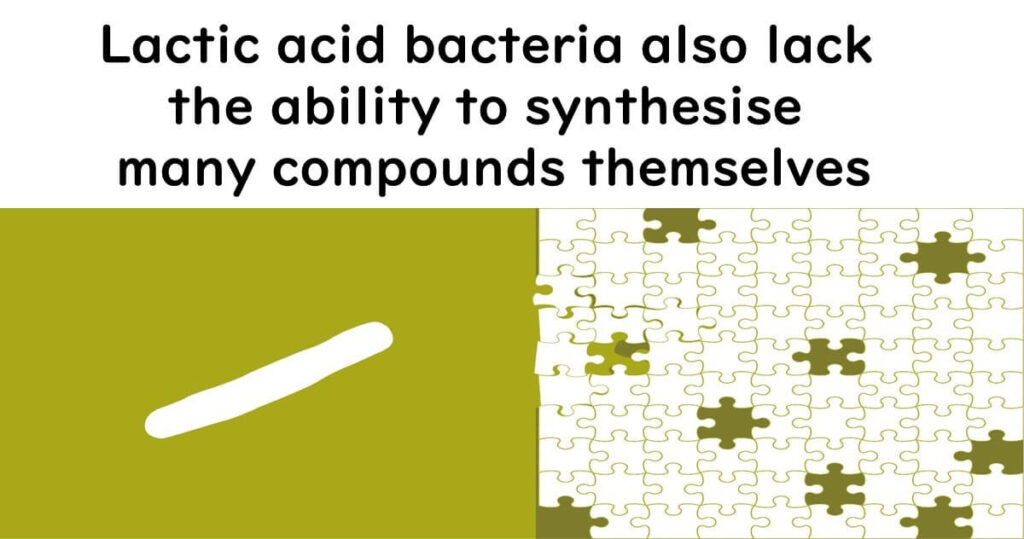
Lactic Acid Bacteria's Strategy of Outsourcing Amino Acid Synthesis
Now, which might be ecologically more advantageous: organisms like humans and lactic acid bacteria that cannot synthesize many amino acids, or those like E. coli that can synthesize all amino acids on their own?
There's some fascinating research involving E. coli that sheds light on this question(Pande et al.,2014). In experiments where genetic mutations prevented E. coli from synthesizing certain amino acids, these deficient strains actually grew faster in nutrient-rich media compared to the normal strains. Even when amino acids were present in the medium, the normal strains used their own metabolic systems to synthesize amino acids, which slowed their growth. In contrast, strains that lacked the ability to synthesize amino acids absorbed them directly from the medium, leading to quicker growth.
This situation is somewhat akin to a well-funded company with many outsourcing options being more efficient than one that tries to do everything in-house.
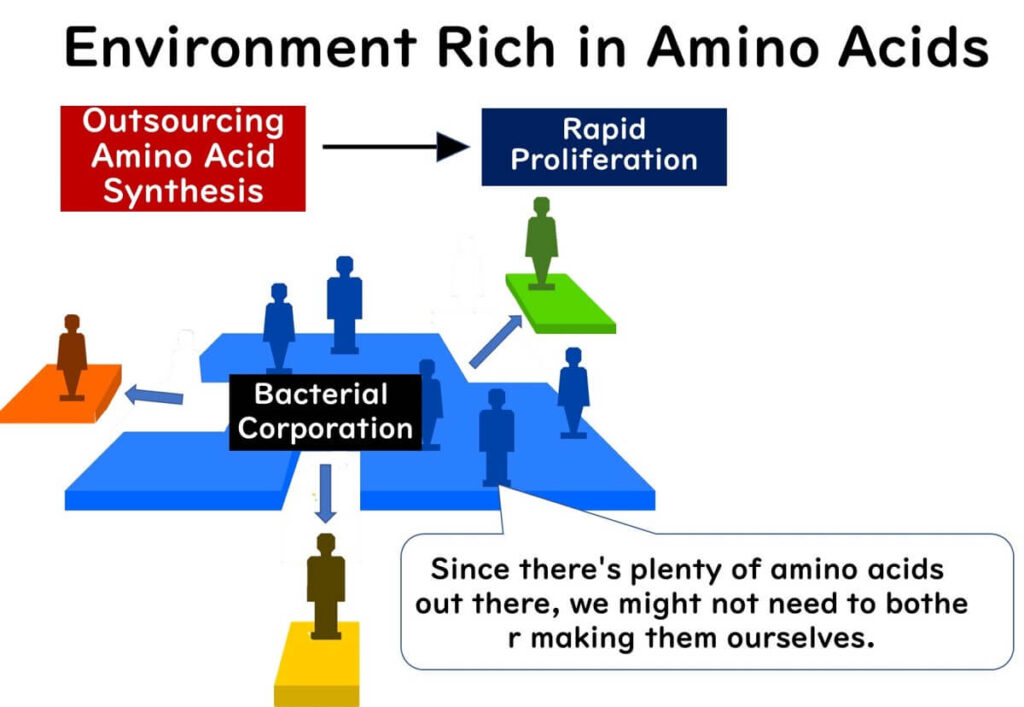
Thus, the seemingly lazy metabolism of lactic acid bacteria, which prevents them from synthesizing their own amino acids, can actually be a strategic advantage in nutrient-rich environments, allowing them to proliferate quickly.
However, this loss of synthetic ability can be a disadvantage in nutrient-poor environments. While other bacteria like E. coli grow well on standard agar media, lactic acid bacteria often struggle, forming only small colonies if any at all. When trying to detect lactic acid bacteria, it becomes necessary to supplement the medium with amino acids and other nutrients. This highlights a strategic trade-off depending on environmental richness.
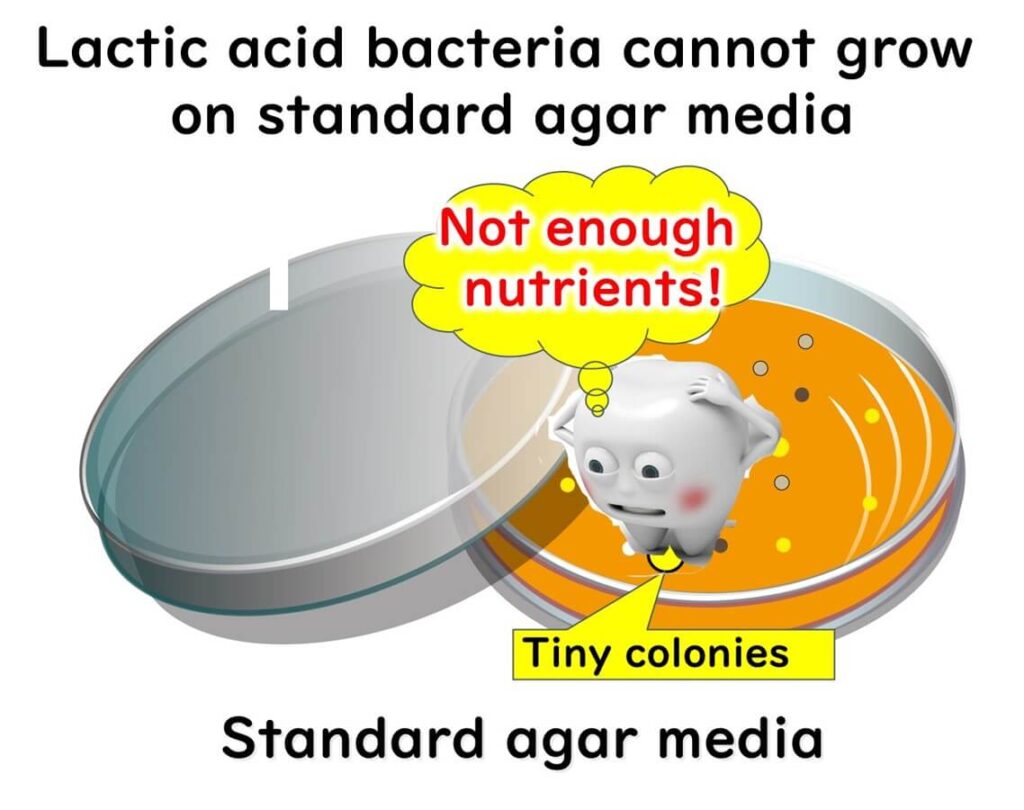
MRS Agar Media
MRS (de Man, Rogosa, Sharpe) agar media was developed in 1960 by de Man, Rogosa, and Sharpe. A key characteristic of MRS media is its rich nutrient composition, which supports the growth of even the most nutritionally demanding lactic acid bacteria, including Pediococcus and Leuconostoc.
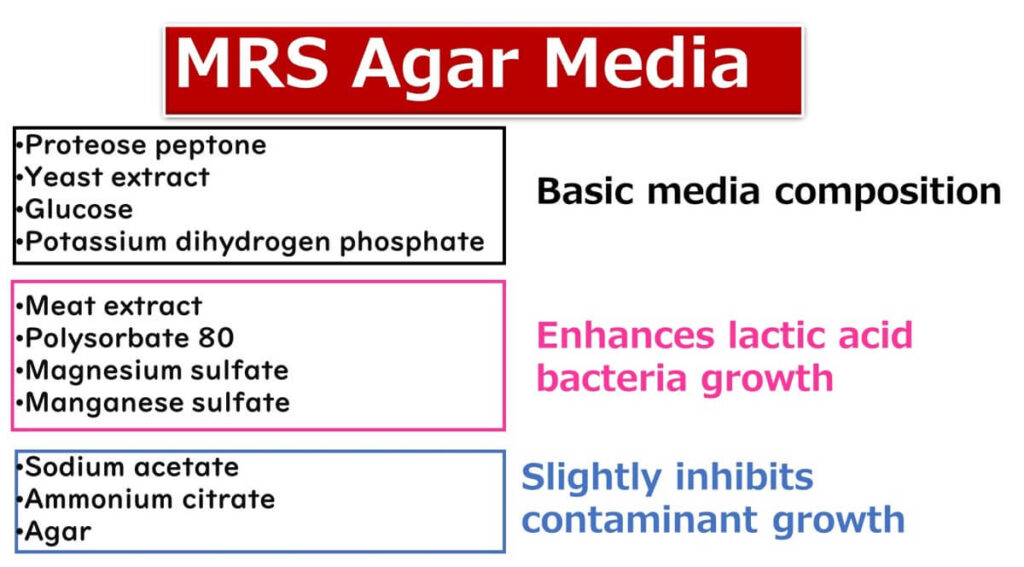
Unlike standard agar media or BCP Plate Count Agar Media, MRS agar also includes meat extract in addition to peptone.
Meat extract, a concentrated extract of beef, is rich in animal amino acids and vitamins, which promote the growth of lactic acid bacteria.
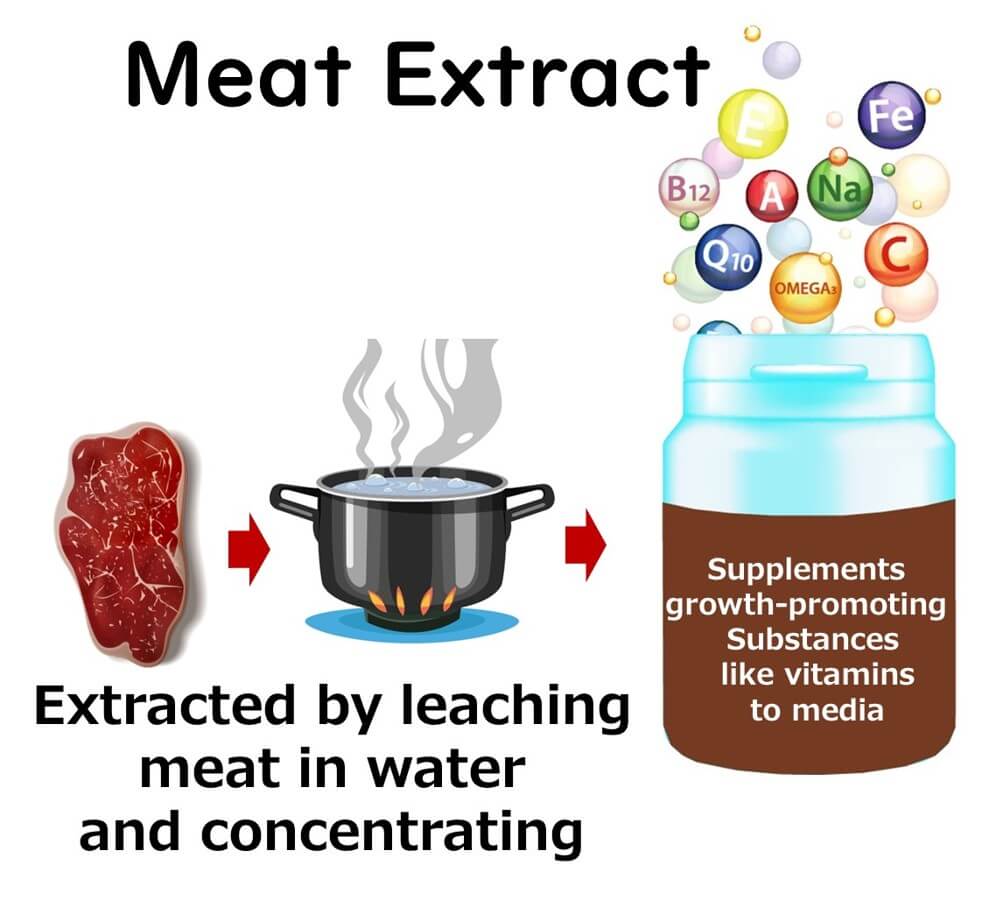
Additionally, magnesium sulfate and manganese sulfate are added to provide magnesium and manganese ions. Divalent cations like magnesium generally enhance enzyme activity, thereby facilitating quicker colony formation by lactic acid bacteria.
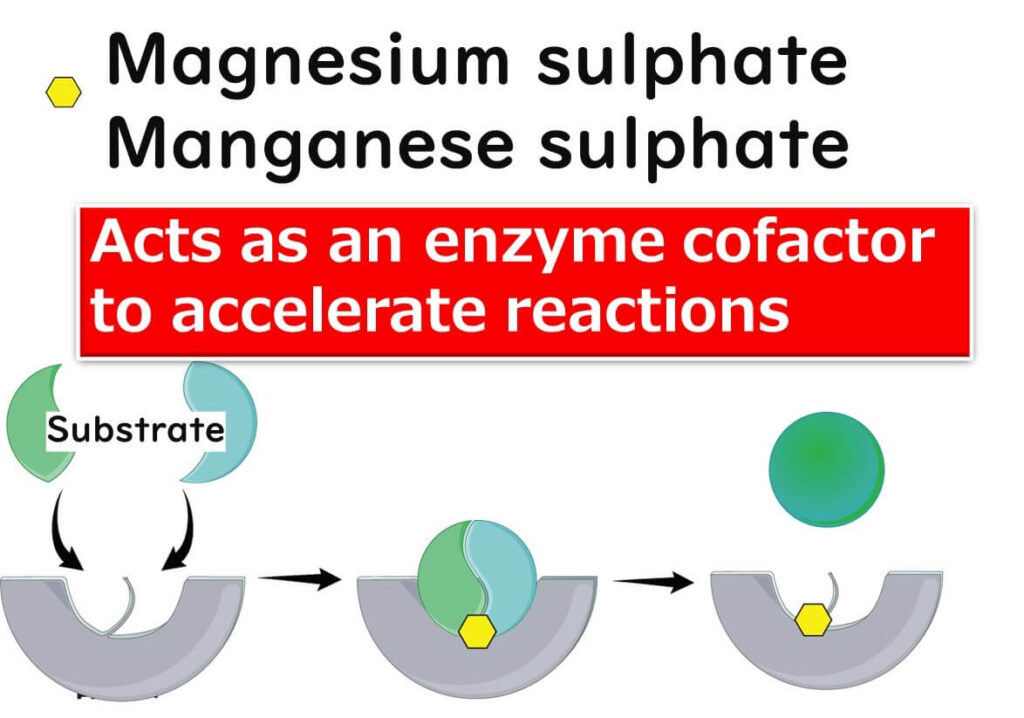
MRS media, unlike BCP agar, also incorporates slight selectivity enhancements. Specifically, ammonium citrate and sodium acetate are added to the formula.
- Sodium acetate, as can be inferred from its use as a food preservative, gently inhibits the growth of many bacteria.
- Ammonium citrate functions similarly to sodium acetate, using the mechanism of organic acids to mildly suppress bacterial growth.
※For a detailed article on the mechanism of sodium acetate as a preservative, please refer to the following.
The Impact of pH on Microbial Growth and Decay, and the Antimicrobial Action of Organic Acids

The mechanism of organic acids as preservatives or shelf-life extenders fundamentally operates the same way across various types of bacteria. It involves the efficient expulsion of hydrogen ions that enter the cell alongside non-dissociated organic acids. A prominent mechanism in lactic acid bacteria is the decarboxylation of the amino acid histidine into histamine by amino acid decarboxylase enzymes.
※For more information on the acid resistance mediated by lactic acid bacteria’s amino acid decarboxylase enzymes, please refer to the following article:
Histamine forming bacteria
In essence, the principle of selecting only lactic acid bacteria in MRS media relies merely on the relative strength of these bacteria against the antibacterial effects of organic acids. However, these components alone do not make MRS media a highly selective medium for suppressing non-target microbes.
Overall, it is important to understand that while MRS media is enriched with nutrients to facilitate the growth of lactic acid bacteria, it does not possess a strong mechanism to exclusively prevent the growth of non-lactic bacteria.
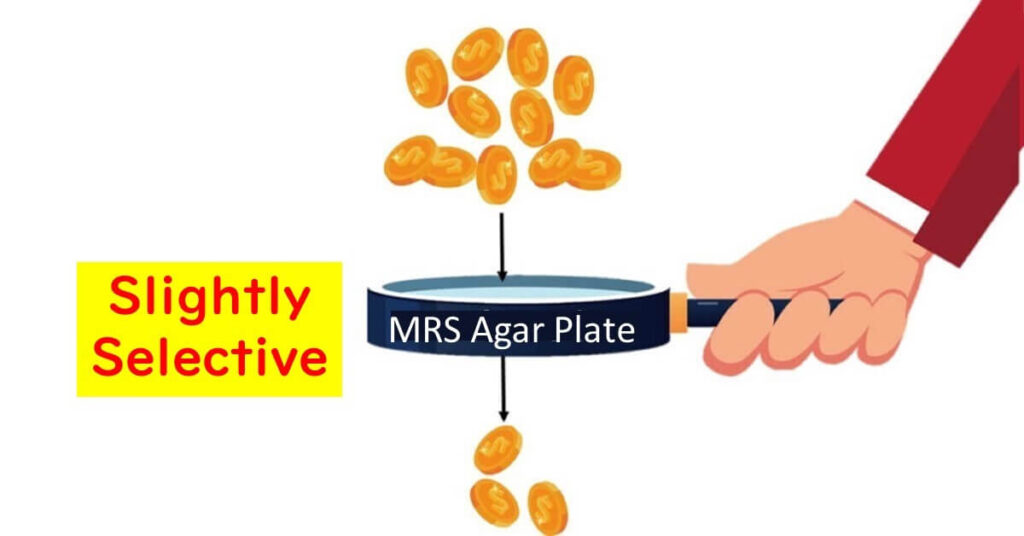
However, the selectivity of MRS media for inhibiting the growth of non-lactic acid bacteria can be enhanced by adding organic acids like sorbic acid and lowering the pH further (e.g., to pH 5.7) according to literature(Reuter,1985).
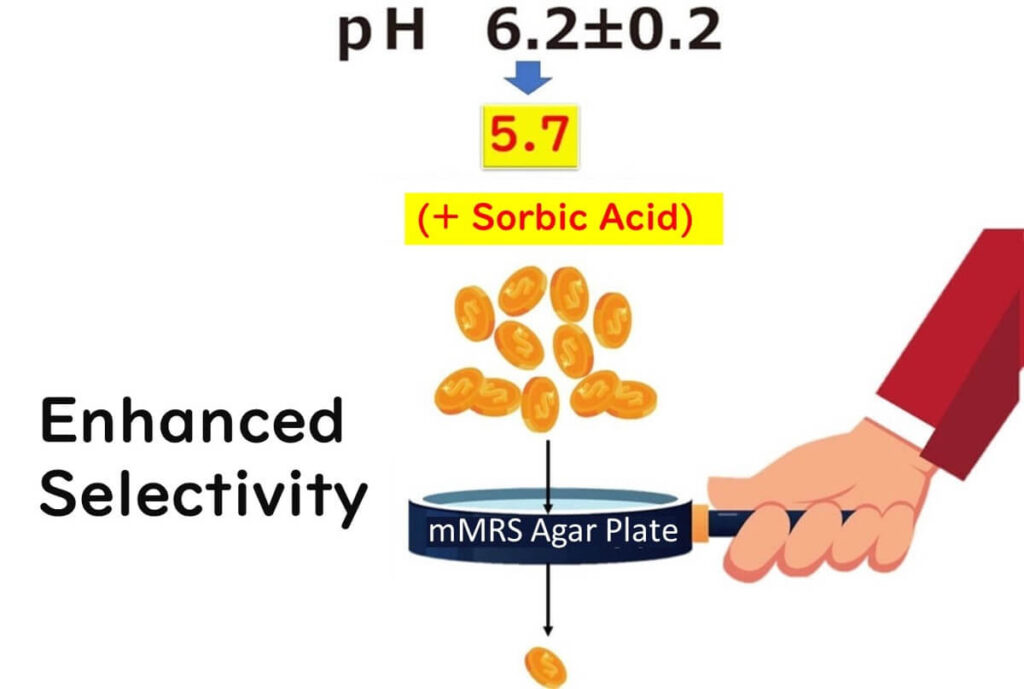
When measuring spoilage lactic acid bacteria in deli items and meats, MRS media can be effectively used as a semi-selective and differential medium. However, as mentioned earlier, it is crucial to remember that this medium is not an exclusive selective medium for lactic acid bacteria. It is recommended to confirm the picked colonies with tests such as the catalase test.
*For basic information on lactic acid bacteria and the catalase test, please refer to the following article:
How Do We Distinguish Lactic Acid Bacteria from Other Gram-Positive Bacteria Using the Catalase Test?
Additionally, to efficiently identify lactic acid bacteria, calcium carbonate is sometimes added to MRS agar media. Calcium carbonate, which is insoluble in water, causes the medium to appear cloudy. However, around the colonies of lactic acid bacteria, lactic acid is produced, transforming calcium carbonate into water-soluble calcium lactate. This principle is used to create a clear, transparent zone around the lactic acid bacteria colonies.
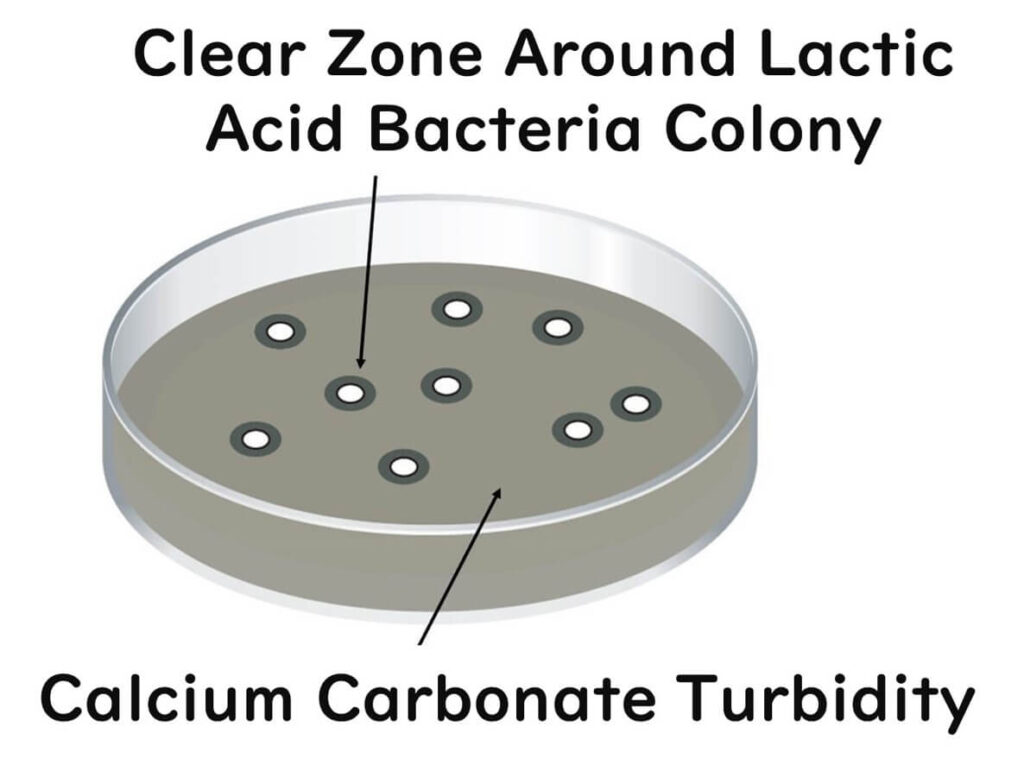
Understanding the challenges of controlling spoilage lactic acid bacteria in food may become clearer upon reading this article. This is because MRS media is designed to inhibit microbial growth with organic acids while selectively allowing the growth of lactic acid bacteria.
What if this concept were applied to food? The dominance of lactic acid bacteria colonies in MRS media implies that, despite the addition of organic acid-based antimicrobials like sodium acetate and sorbic acid in food, lactic acid bacteria can still proliferate. For fundamental information on spoilage lactic acid bacteria, please see the following article:
Lactic Acid Bacteria: More Than Just Beneficial Bugs in Foods
